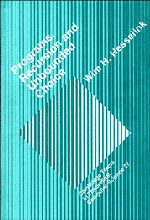
-
Select format
-
- Publisher:
- Cambridge University Press
- Publication date:
- 11 March 2010
- 21 May 1992
- ISBN:
- 9780511569784
- 9780521018296
- Dimensions:
- Weight & Pages:
- Dimensions:
- (247 x 174 mm)
- Weight & Pages:
- 0.385kg, 240 Pages
You may already have access via personal or institutional login
Book description
This book is a complete account of the predicate transformation calculus semantics of sequential programs, including repetitions, recursive procedures, computational induction and unbounded nondeterminacy. Predicate transformation semantics are the best specification method for the development of correct and well-structured computer programs. The author develops this theory to a greater depth than has been achieved before, and describes it in a way that makes it readily compatible with programming rules for partial and total correctness of repetitions and recursive procedures, supplies new rules for proving incorrectness, and a stronger rule for proving that two programs satisfy the same specifications. Finally, the semantics are extended so that non-terminating programs can be specified as well. This will be essential reading for all computer scientists working in specification and verification of programs.
Reviews
"...an excellent book to get acquainted with the ideas and methods of the program methodology community....It is clear, elegant and well-written. Every serious student of programming methodology should read this carefully, and serious researchers in the denotational semantics of unbounded indeterminacy would be well-rewarded by a study of this book." Prakesh Panangaden, SIGACT News
"...would make a good text for an advanced graduate course on semantics or program specification and verification. There are sufficient exercises for self-study or for use in a course. It is clear, thorough, well written, and carefully conceived." Gary T. Leavens, SIAM Review
"...of interest for theoretical computer scientists and mathematicians..." Mathematical Reviews
Contents
Metrics
Full text views
Full text views help Loading metrics...
Loading metrics...
* Views captured on Cambridge Core between #date#. This data will be updated every 24 hours.
Usage data cannot currently be displayed.
Accessibility standard: Unknown
Why this information is here
This section outlines the accessibility features of this content - including support for screen readers, full keyboard navigation and high-contrast display options. This may not be relevant for you.
Accessibility Information
Accessibility compliance for the PDF of this book is currently unknown and may be updated in the future.


